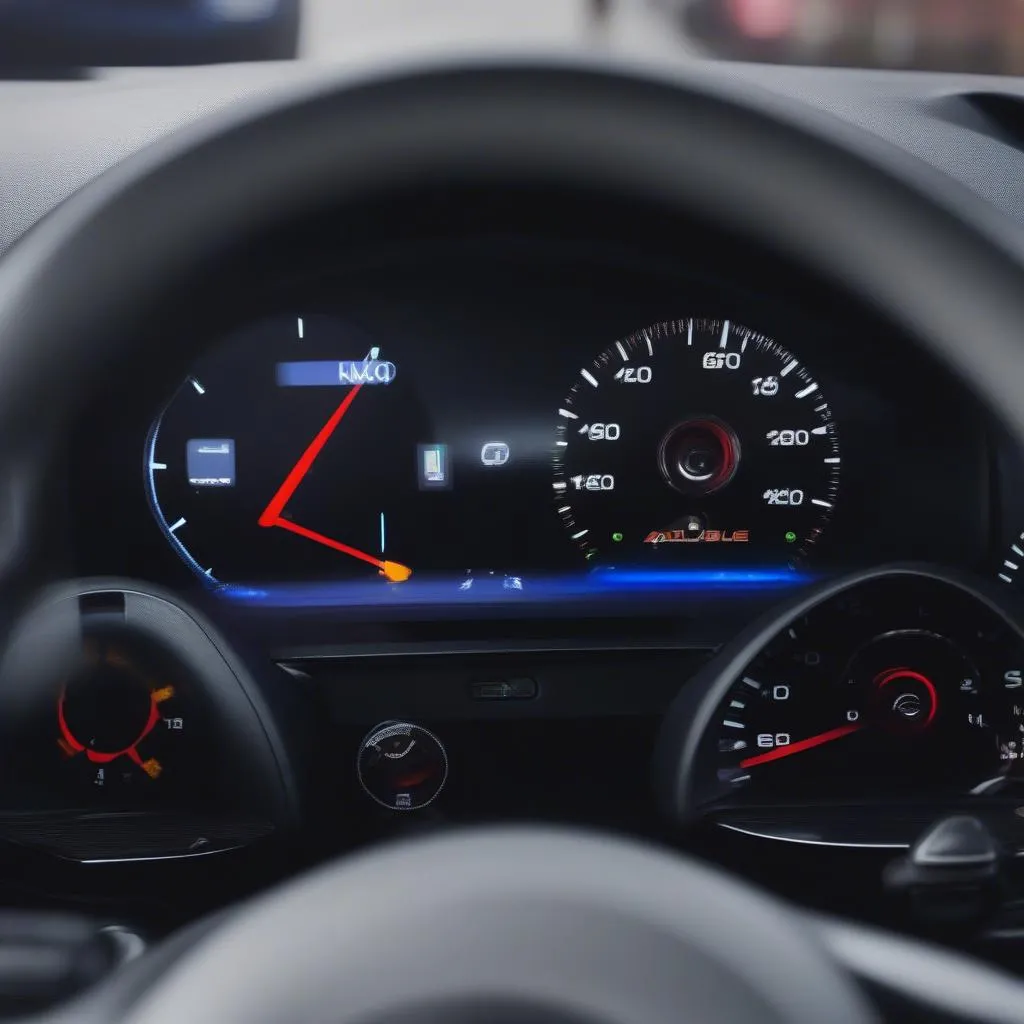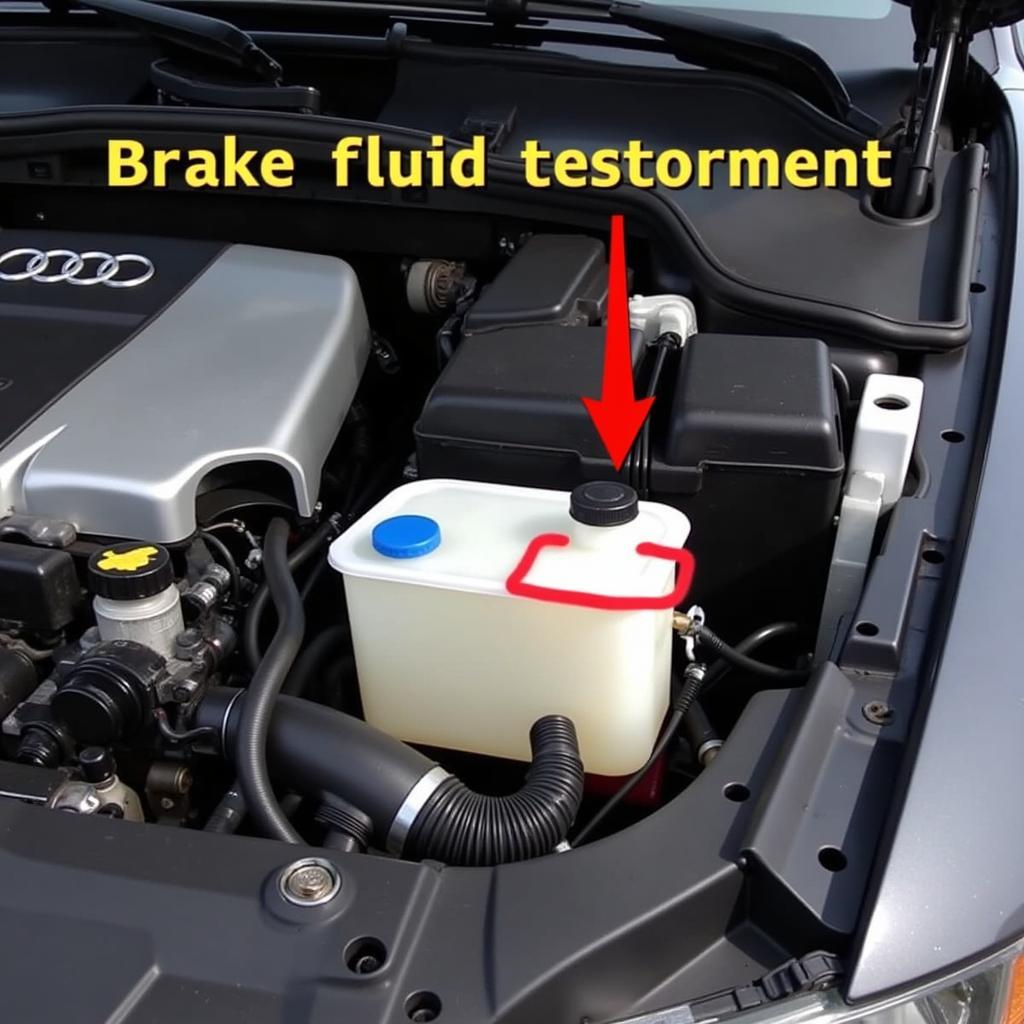The dreaded EPC warning light on your SEAT. It illuminates your dashboard, injecting a dose of anxiety into your otherwise peaceful drive. What does it mean? More importantly, what should you do about the seat epc warning light? This comprehensive guide will delve into the intricacies of the EPC warning light in SEAT vehicles, providing you with the knowledge you need to navigate this potentially frustrating situation.
The Electronic Power Control (EPC) system is a crucial component of modern SEAT vehicles. It manages several essential functions, including throttle control, fuel injection, and ignition timing. When the EPC warning light appears, it indicates a potential problem within this complex system. Ignoring this warning could lead to further damage and costly repairs down the line. If you see the seat epc warning light, it’s crucial to understand what might be causing it.
Understanding the SEAT EPC Warning Light
The EPC light is not a stand-alone diagnostic tool. It serves as a general warning, signaling a potential issue within the EPC system. This means that a variety of problems could trigger the EPC warning light, ranging from minor sensor malfunctions to more serious engine issues. This ambiguity is what makes the EPC light so unnerving for many drivers.
Common Causes of the EPC Warning Light
While numerous issues can trigger the EPC light, some common culprits include:
- Faulty Throttle Position Sensor: This sensor relays information about the accelerator pedal’s position to the engine control unit. A malfunction can lead to erratic throttle response or even complete loss of power.
- Brake Light Switch Issues: A failing brake light switch can sometimes trigger the EPC light, often accompanied by other warning lights like the ABS or traction control lights.
- Mass Airflow Sensor (MAF) Problems: The MAF sensor measures the amount of air entering the engine. A faulty MAF sensor can lead to poor fuel economy, rough idling, and decreased engine performance.
- Oxygen Sensor Malfunction: Oxygen sensors monitor the exhaust gases to ensure optimal combustion. A faulty sensor can negatively impact fuel efficiency and emissions.
- Spark Plugs and Ignition Coils: Worn-out spark plugs or faulty ignition coils can disrupt the combustion process, triggering the EPC light.
What to Do When the EPC Light Comes On
Seeing the seat epc warning light can be concerning, but don’t panic. Here’s a step-by-step guide on how to handle the situation:
- Assess the Vehicle’s Behavior: Is the engine running rough? Are there any noticeable changes in performance? Take note of any unusual symptoms accompanying the EPC light.
- Check Other Warning Lights: Are any other warning lights illuminated on the dashboard? This can provide valuable clues about the underlying issue.
- Consult the Owner’s Manual: Your SEAT owner’s manual will offer specific guidance regarding the EPC warning light and recommended actions.
- Seek Professional Diagnosis: While some basic troubleshooting can be done at home, it’s crucial to have the vehicle diagnosed by a qualified technician. seat leon epc warning light They can use specialized diagnostic tools to pinpoint the exact cause of the problem.
Preventing Future EPC Warning Light Issues
Regular maintenance is key to preventing EPC warning light issues. This includes:
- Routine Oil Changes: Keeping the engine oil clean and at the correct level is crucial for optimal performance and longevity.
- Spark Plug Replacement: Replace spark plugs according to the manufacturer’s recommended intervals.
- Fuel System Cleaning: Periodically cleaning the fuel system can help prevent clogged injectors and other fuel-related problems.
- Regular Inspections: Regular inspections by a qualified technician can help identify potential problems before they escalate.
Expert Insight: “Regular maintenance is the best preventative medicine for your car. Addressing small issues early on can prevent them from developing into major problems, saving you time and money in the long run.” – David Miller, Automotive Engineer
Conclusion
The seat epc warning light can be a harbinger of underlying issues within your SEAT’s electronic power control system. While the appearance of this warning light can be disconcerting, understanding its potential causes and taking appropriate action can help you avoid costly repairs and keep your SEAT running smoothly. Don’t ignore the EPC light – address it promptly to ensure the longevity and reliability of your vehicle.
Expert Insight: “Don’t panic if you see the EPC light. Stay calm, assess the situation, and seek professional help. A qualified technician can quickly diagnose the problem and get you back on the road.” – Sarah Johnson, Certified SEAT Technician
FAQ
- Is it safe to drive with the EPC light on? While you might be able to drive for a short distance, it’s not recommended. Continuing to drive could exacerbate the underlying problem and lead to further damage.
- Can I reset the EPC light myself? While disconnecting the battery might temporarily reset the light, it won’t fix the underlying problem. It’s crucial to address the root cause.
- How much does it cost to fix an EPC light issue? The cost varies depending on the specific problem. A simple sensor replacement might be relatively inexpensive, while more complex engine repairs can be significantly more costly.
- Can a faulty oxygen sensor cause the EPC light to come on? Yes, a malfunctioning oxygen sensor can trigger the EPC light, as it plays a role in the engine’s fuel management system.
- What is the difference between the EPC light and the check engine light? While both relate to engine performance, the EPC light specifically focuses on the electronic power control system, while the check engine light can indicate a wider range of issues.
- Can a low battery cause the EPC light to illuminate? While unlikely, a severely low battery can sometimes cause erratic behavior in various vehicle systems, including the EPC.
- Is it necessary to take my car to a SEAT dealership to address an EPC light issue? While a SEAT dealership has specialized knowledge of SEAT vehicles, any qualified mechanic with experience in electronic diagnostics can effectively diagnose and repair EPC-related problems.


